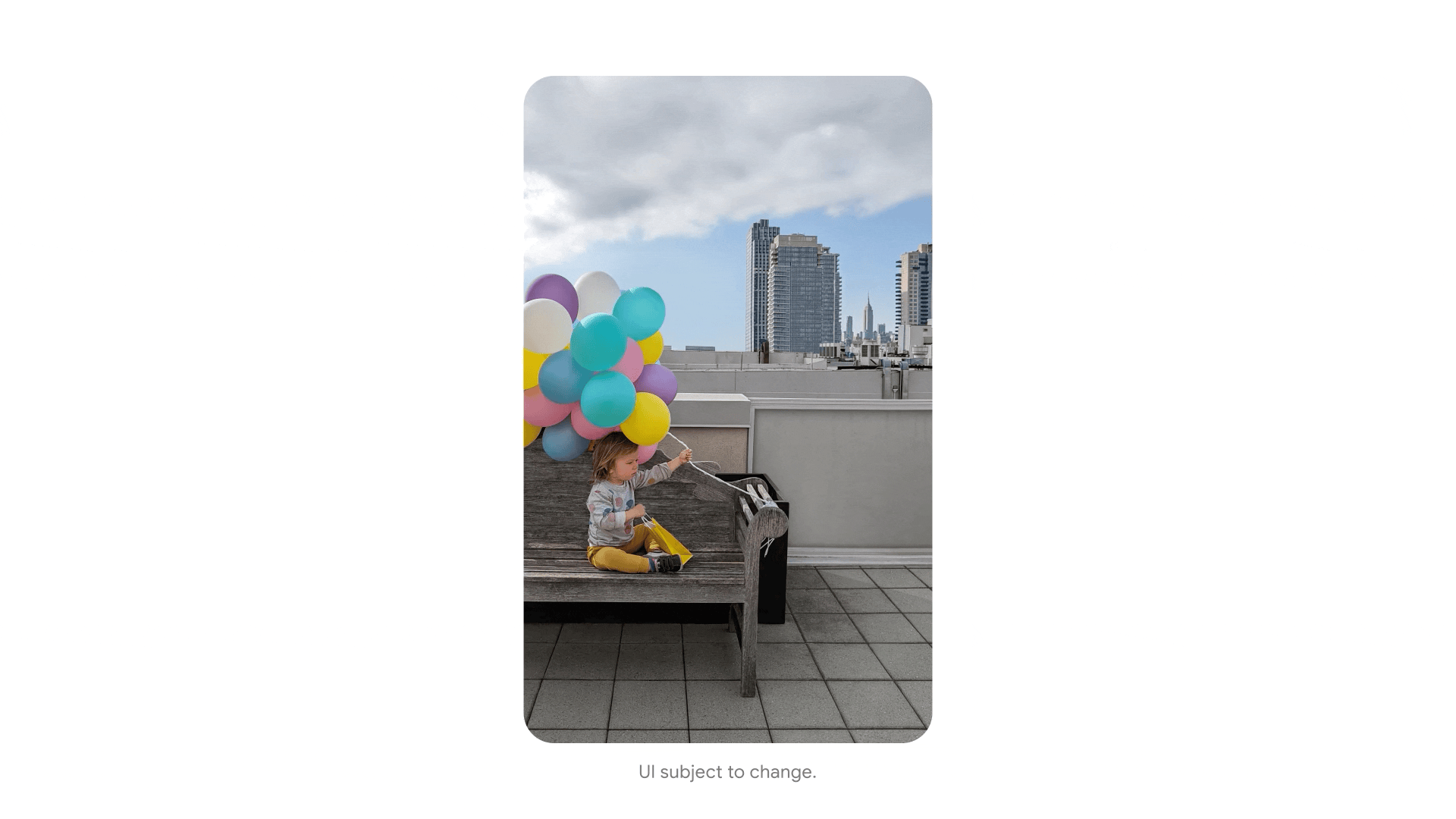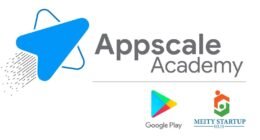Seven years into our journey as an AI-first company, we’re at an exciting inflection point. We have an opportunity to make AI even more helpful for people, for businesses, for communities, for everyone.
We’ve been applying AI to make our products radically more helpful for a while. With generative AI, we’re taking the next step. With a bold and responsible approach, we’re reimagining all our core products, including Search.
AI in our products
“Help me write” in Gmail
There are some great examples of how generative AI is helping to evolve our products, starting with Gmail. In 2017, we launched Smart Reply, short responses you could select with just one click. Next came Smart Compose, which offered writing suggestions as you type. Smart Compose led to more advanced writing features powered by AI. They’ve been used in Workspace over 180 billion times in the past year alone. And now, with a much more powerful generative model, we’re taking the next step in Gmail with “Help me write.”
Let’s say you got an email that your flight was canceled. The airline has sent a voucher, but what you really want is a full refund. You could reply, and use “Help me write.”
Just type in the prompt of what you want — an email that asks for a full refund — hit create, and a full draft appears. It conveniently pulls in flight details from the previous email. It looks pretty close to what you want to send, but maybe you want to refine it further. In this case, a more elaborate email might increase the chances of getting the refund. “Help me write” will start rolling out as part of our Workspace updates. And just like with Smart Compose, you’ll see it get better over time.
New Immersive View for routes in Maps
Since the early days of Street View, AI has stitched together billions of panoramic images, so people can explore the world from their device. At last year’s I/O we introduced Immersive View, which uses AI to create a high-fidelity representation of a place, so you can experience it before you visit.
Now, we’re expanding that same technology to do what Maps does best: help you get where you want to go. Google Maps provides 20 billion kilometers of directions, every day — that’s a lot of trips. Now imagine if you could see your whole trip in advance. With Immersive View for routes you can, whether you’re walking, cycling or driving.
Say you’re in New York City and you want to go on a bike ride. Maps has given you a couple of options close to where you are. The one on the waterfront looks scenic, but you want to get a feel for it first, so you click on Immersive View for routes. It’s an entirely new way to look at your journey. You can zoom in to get an incredible bird’s eye view of the ride.
There’s more information available too. You can check air quality, traffic and weather, and see how they might change.
Immersive View for routes will begin to roll out over the summer, and launch in 15 cities by the end of the year, including London, New York, Tokyo and San Francisco.
A New York City bike ride in the new Immersive View for routes
A new Magic Editor experience in Photos
Another product made better by AI is Google Photos. We introduced it at I/O in 2015, and it was one of our first AI-native products. Breakthroughs in machine learning made it possible to search your photos for things like people, sunsets or waterfalls.
Of course, we want you to do more than just search photos — we also want to help you make them better. In fact, every month, 1.7 billion images are edited in Google Photos. AI advancements give us more powerful ways to do this. For example, Magic Eraser, launched first on Pixel, uses AI-powered computational photography to remove unwanted distractions. And later this year, using a combination of semantic understanding and generative AI, you can do much more with a new experience called Magic Editor.
Here’s an example: This is a great photo, but as a parent, you probably want your kid at the center of it all. And it looks like the balloons got cut off in this one, so you can go ahead and reposition the birthday boy. Magic Editor automatically recreates parts of the bench and balloons that were not captured in the original shot. As a finishing touch, you can punch up the sky. This also changes the lighting in the rest of the photo so the edit feels consistent. It’s truly magical. We’re excited to roll out Magic Editor in Google Photos later this year.

Caption: A photo transformed by Magic Editor in Google Photos
Making AI more helpful for everyone
From Gmail and Photos to Maps, these are just a few examples of how AI can help you in moments that matter. And there’s so much more we can do to deliver the full potential of AI across the products you know and love.
Today, we have 15 products that each serve more than half a billion people and businesses. And six of those products serve over 2 billion users each. This gives us so many opportunities to deliver on our mission — to organize the world’s information and make it universally accessible and useful.
It’s a timeless mission that feels more relevant with each passing year. And looking ahead, making AI helpful for everyone is the most profound way we’ll advance our mission. We’re doing this in four important ways:
- First, by improving your knowledge and learning, and deepening your understanding of the world.
- Second, by boosting creativity and productivity, so you can express yourself and get things done.
- Third, by enabling developers and businesses to build their own transformative products and services.
- And finally, by building and deploying AI responsibly, so that everyone can benefit equally.
PaLM 2 and Gemini
We are so excited by the opportunities ahead. Our ability to make AI helpful for everyone relies on continuously advancing our foundation models. So I want to take a moment to share how we’re approaching them.
Last year you heard us talk about PaLM, which led to many improvements across our products. Today, we’re ready to announce our latest PaLM model in production: PaLM 2.
PaLM 2 builds on our fundamental research and our latest infrastructure. It’s highly capable at a wide range of tasks and easy to deploy. We are announcing more than 25 products and features powered by PaLM 2 today.
PaLM 2 models deliver excellent foundational capabilities across a wide range of sizes. We’ve affectionately named them Gecko, Otter, Bison, and Unicorn. Gecko is so lightweight that it can work on mobile devices: fast enough for great interactive applications on-device, even when offline. PaLM 2 models are stronger in logic and reasoning thanks to broad training on scientific and mathematical topics. It’s also trained on multilingual text — spanning more than 100 languages — so it understands and generates nuanced results.
Combined with powerful coding capabilities, PaLM 2 can also help developers collaborating around the world. Let’s say you’re working with a colleague in Seoul and you’re debugging code. You can ask it to fix a bug and help out your teammate by adding comments in Korean to the code. It first recognizes the code is recursive, then suggests a fix. It explains the reasoning behind the fix, and it adds Korean comments like you asked.
While PaLM 2 is highly capable, it really shines when fine-tuned on domain-specific knowledge. We recently released Sec-PaLM, fine-tuned for security use cases. It uses AI to better detect malicious scripts, and it can help security experts understand and resolve threats.
Another example is Med-PaLM 2. In this case, it’s fine-tuned on medical knowledge. This fine-tuning achieved a 9X reduction in inaccurate reasoning when compared to the base model, approaching the performance of clinician experts who answered the same set of questions. In fact, Med-PaLM 2 was the first language model to perform at “expert” level on medical licensing exam-style questions, and is currently the state of the art.
We’re also working to add capabilities to Med-PaLM 2, so that it can synthesize information from medical imaging like plain films and mammograms. You can imagine an AI collaborator that helps radiologists interpret images and communicate the results. These are some examples of PaLM 2 being used in specialized domains. We can’t wait to see it used in more, which is why I’m pleased to announce that PaLM 2 is now available in preview.
PaLM 2 is the latest step in our decade-long journey to bring AI in responsible ways to billions of people. It builds on progress made by two world-class research teams, the Brain Team and DeepMind.
Looking back at the defining AI breakthroughs over the last decade, these teams have contributed to a significant number of them: AlphaGo,Transformers, sequence-to-sequence models, and so on. All this helped set the stage for the inflection point we’re at today.
We recently brought these two teams together into a single unit, Google DeepMind. Using the computational resources of Google, they’re focused on building more capable systems, safely and responsibly.
This includes our next-generation foundation model, Gemini, which is still in training. Gemini was created from the ground up to be multimodal, highly efficient at tool and API integrations and built to enable future innovations, like memory and planning. While still early, we’re already seeing impressive multimodal capabilities not seen in prior models.
Once fine-tuned and rigorously tested for safety, Gemini will be available at various sizes and capabilities, just like PaLM 2.
AI responsibility: Tools to identify generated content
As we invest in more capable models, we are also deeply investing in AI responsibility. That includes having the tools to identify synthetically generated content whenever you encounter it.
Two important approaches are watermarking and metadata. Watermarking embeds information directly into content in ways that are maintained even through modest image editing. Moving forward, we’re building our models to include watermarking and other techniques from the start. If you look at a synthetic image, it’s impressive how real it looks, so you can imagine how important this is going to be in the future.
Metadata allows content creators to associate additional context with original files, giving you more information whenever you encounter an image. We’ll ensure every one of our AI-generated images has that metadata. Read more about our bold and responsible approach.
Updates to Bard and Workspace
As models get better and more capable, one of the most exciting opportunities is making them available for people to engage with directly.
That’s the opportunity we have with Bard, our experiment for conversational AI, which we launched in March. We’ve been rapidly evolving Bard. It now supports a wide range of programming capabilities, and it’s gotten much smarter at reasoning and math prompts. And, as of today, it is now fully running on PaLM 2. Read more about the latest Bard updates.















79 comments
I have been checking out many of your stories and i must say pretty nice stuff. I will definitely bookmark your website.
What Is FitSpresso? FitSpresso is a dietary supplement that is made to support healthy fat-burning in the body
I got what you intend, thanks for putting up.Woh I am pleased to find this website through google. “The test and use of a man’s education is that he finds pleasure in the exercise of his mind.” by Carl Barzun.
One such software that has been generating buzz these days is the Lottery Defeater
Hey very cool site!! Man .. Excellent .. Amazing .. I will bookmark your website and take the feeds also…I’m happy to find a lot of useful information here in the post, we need develop more strategies in this regard, thanks for sharing. . . . . .
I like this post, enjoyed this one regards for posting. “He removes the greatest ornament of friendship, who takes away from it respect.” by Cicero.
I’ve been absent for some time, but now I remember why I used to love this website. Thank you, I will try and check back more often. How frequently you update your site?
I believe this site contains some real excellent information for everyone :D. “Experience is not what happens to you it’s what you do with what happens to you.” by Aldous Huxley.
It¦s actually a nice and useful piece of information. I am happy that you simply shared this useful info with us. Please keep us informed like this. Thank you for sharing.
Real instructive and fantastic complex body part of subject material, now that’s user genial (:.
Deference to op, some great entropy.
F*ckin’ amazing things here. I’m very glad to peer your article. Thanks a lot and i’m having a look forward to contact you. Will you please drop me a mail?
Hey there! I’ve been reading your web site for a while now and finally got the bravery to go ahead and give you a shout out from Houston Texas! Just wanted to mention keep up the fantastic job!
Your home is valueble for me. Thanks!…
whoah this blog is magnificent i really like reading your posts. Stay up the great paintings! You understand, lots of individuals are looking round for this information, you could help them greatly.
Thanks for all your efforts that you have put in this. very interesting info .
Some really nice and useful information on this web site, as well I think the style and design contains excellent features.
Loving the info on this web site, you have done outstanding job on the blog posts.
It¦s really a great and useful piece of info. I¦m glad that you shared this helpful info with us. Please stay us up to date like this. Thank you for sharing.
I rattling glad to find this web site on bing, just what I was searching for : D besides saved to fav.
Attractive section of content. I just stumbled upon your web site and in accession capital to assert that I acquire in fact enjoyed account your blog posts. Anyway I’ll be subscribing to your augment and even I achievement you access consistently quickly.
Hi there! I could have sworn I’ve been to this website before but after checking through some of the post I realized it’s new to me. Anyhow, I’m definitely happy I found it and I’ll be bookmarking and checking back often!
I’m typically to blogging and i actually appreciate your content. The article has actually peaks my interest. I’m going to bookmark your web site and keep checking for brand new information.
Glad to be one of the visitors on this amazing site : D.
Undeniably imagine that that you said. Your favorite reason appeared to be on the net the easiest thing to take note of. I say to you, I certainly get annoyed at the same time as folks think about issues that they plainly don’t realize about. You managed to hit the nail upon the top and also defined out the entire thing without having side-effects , other folks can take a signal. Will probably be again to get more. Thanks
Hello my loved one! I want to say that this post is awesome, great written and come with approximately all vital infos. I would like to see more posts like this .
certainly like your website but you need to check the spelling on quite a few of your posts. Many of them are rife with spelling issues and I in finding it very bothersome to tell the truth on the other hand I’ll certainly come back again.
This is a very good tips especially to those new to blogosphere, brief and accurate information… Thanks for sharing this one. A must read article.
Hello, you used to write wonderful, but the last few posts have been kinda boring… I miss your tremendous writings. Past few posts are just a little out of track! come on!
Good day! I could have sworn I’ve been to this website before but after browsing through some of the post I realized it’s new to me. Nonetheless, I’m definitely delighted I found it and I’ll be bookmarking and checking back often!
I truly appreciate this post. I have been looking everywhere for this! Thank goodness I found it on Bing. You have made my day! Thanks again
I conceive other website proprietors should take this website as an model, very clean and good user pleasant pattern.
You can definitely see your expertise within the work you write. The arena hopes for even more passionate writers such as you who are not afraid to mention how they believe. At all times follow your heart. “We are near waking when we dream we are dreaming.” by Friedrich von Hardenberg Novalis.
Just what I was searching for, thanks for putting up.
I have been absent for some time, but now I remember why I used to love this site. Thank you, I¦ll try and check back more frequently. How frequently you update your site?
I got good info from your blog
Very great post. I just stumbled upon your blog and wanted to mention that I’ve really enjoyed browsing your blog posts. After all I’ll be subscribing for your rss feed and I am hoping you write once more soon!
After examine just a few of the weblog posts on your web site now, and I actually like your manner of blogging. I bookmarked it to my bookmark website list and can be checking again soon. Pls take a look at my website as properly and let me know what you think.
I and also my friends have been looking through the best things from your site and so the sudden got a horrible suspicion I never expressed respect to the website owner for those secrets. Most of the young boys happened to be so excited to learn them and already have in fact been using those things. I appreciate you for truly being indeed kind as well as for pick out certain incredible topics most people are really wanting to understand about. My very own sincere regret for not expressing appreciation to you sooner.
I would like to thank you for the efforts you’ve put in writing this site. I’m hoping the same high-grade site post from you in the upcoming as well. Actually your creative writing abilities has inspired me to get my own site now. Really the blogging is spreading its wings quickly. Your write up is a great example of it.
I like what you guys are up also. Such smart work and reporting! Keep up the excellent works guys I’ve incorporated you guys to my blogroll. I think it will improve the value of my web site 🙂
naturally like your web-site but you need to test the spelling on several of your posts. A number of them are rife with spelling issues and I in finding it very bothersome to inform the reality then again I will surely come back again.
Very interesting information!Perfect just what I was searching for!
Wow! Thank you! I always needed to write on my website something like that. Can I implement a portion of your post to my blog?
My spouse and I stumbled over here from a different web page and thought I may as well check things out. I like what I see so now i am following you. Look forward to looking into your web page repeatedly.
Simply a smiling visitant here to share the love (:, btw outstanding pattern. “Treat the other man’s faith gently it is all he has to believe with.” by Athenus.
You made some decent factors there. I appeared on the internet for the difficulty and found most individuals will associate with along with your website.
I will immediately seize your rss feed as I can’t find your email subscription link or newsletter service. Do you have any? Please let me realize in order that I may subscribe. Thanks.
My brother suggested I would possibly like this web site. He used to be entirely right. This submit actually made my day. You can not believe just how a lot time I had spent for this information! Thanks!
My brother recommended I might like this blog. He was entirely right. This post truly made my day. You can not imagine simply how much time I had spent for this information! Thanks!
After study a few of the blog posts on your website now, and I truly like your way of blogging. I bookmarked it to my bookmark website list and will be checking back soon. Pls check out my web site as well and let me know what you think.
Great V I should certainly pronounce, impressed with your site. I had no trouble navigating through all the tabs as well as related info ended up being truly simple to do to access. I recently found what I hoped for before you know it at all. Reasonably unusual. Is likely to appreciate it for those who add forums or anything, site theme . a tones way for your client to communicate. Nice task..
F*ckin’ remarkable things here. I am very glad to see your post. Thanks a lot and i am looking forward to contact you. Will you kindly drop me a e-mail?
Today, I went to the beach front with my kids. I found a sea shell and gave it to my 4 year old daughter and said “You can hear the ocean if you put this to your ear.” She placed the shell to her ear and screamed. There was a hermit crab inside and it pinched her ear. She never wants to go back! LoL I know this is entirely off topic but I had to tell someone!
Good write-up, I’m regular visitor of one’s website, maintain up the nice operate, and It’s going to be a regular visitor for a lengthy time.
Very interesting information!Perfect just what I was looking for!
There is perceptibly a lot to know about this. I feel you made some nice points in features also.
Thanks for your marvelous posting! I genuinely enjoyed reading it, you may be a great author.I will ensure that I bookmark your blog and may come back at some point. I want to encourage yourself to continue your great posts, have a nice afternoon!
Great web site. Lots of helpful info here. I’m sending it to a few pals ans also sharing in delicious. And of course, thank you on your sweat!
I’m still learning from you, as I’m trying to achieve my goals. I certainly liked reading everything that is posted on your blog.Keep the stories coming. I enjoyed it!
It?¦s truly a nice and useful piece of information. I?¦m satisfied that you simply shared this useful information with us. Please stay us informed like this. Thanks for sharing.
I am forever thought about this, appreciate it for putting up.
What i don’t understood is in fact how you are no longer really much more well-appreciated than you may be right now. You’re very intelligent. You already know therefore significantly in the case of this matter, produced me individually consider it from so many varied angles. Its like women and men aren’t interested until it¦s something to accomplish with Lady gaga! Your own stuffs nice. At all times maintain it up!
I believe you have mentioned some very interesting points, regards for the post.
I’d incessantly want to be update on new posts on this internet site, saved to bookmarks! .
At this time it appears like Movable Type is the preferred blogging platform available right now. (from what I’ve read) Is that what you’re using on your blog?
Thank you for another informative website. The place else may I am getting that kind of info written in such a perfect means? I’ve a venture that I am just now running on, and I’ve been on the glance out for such info.
I got good info from your blog
Fantastic blog you have here but I was curious about if you knew of any user discussion forums that cover the same topics discussed in this article? I’d really like to be a part of community where I can get feedback from other knowledgeable individuals that share the same interest. If you have any suggestions, please let me know. Thanks a lot!
I’ve been exploring for a little bit for any high quality articles or blog posts on this kind of house . Exploring in Yahoo I finally stumbled upon this web site. Studying this info So i am happy to express that I’ve a very good uncanny feeling I found out just what I needed. I such a lot surely will make sure to do not fail to remember this website and provides it a look regularly.
It’s actually a great and useful piece of information. I’m glad that you shared this useful info with us. Please keep us informed like this. Thank you for sharing.
The core of your writing while appearing reasonable at first, did not really settle very well with me personally after some time. Someplace throughout the sentences you managed to make me a believer unfortunately only for a while. I still have got a problem with your leaps in assumptions and one would do well to fill in all those gaps. In the event you actually can accomplish that, I would surely end up being amazed.
There’s a quiet wisdom in every sentence, as though each word is carefully selected to provide just the right amount of insight.
Magnificent beat ! I wish to apprentice while you amend your web site, how can i subscribe for a blog web site? The account helped me a acceptable deal. I had been a little bit acquainted of this your broadcast provided bright clear idea
You have noted very interesting details ! ps nice site.
cost generic clomiphene prices can you get generic clomid pills where can i get cheap clomiphene tablets how to get cheap clomiphene no prescription clomiphene for sale in mexico clomiphene generic can i get clomid without rx
Does your site have a contact page? I’m having trouble locating it but, I’d like to send you an e-mail. I’ve got some recommendations for your blog you might be interested in hearing. Either way, great site and I look forward to seeing it improve over time.
I like the valuable information you provide in your articles. I’ll bookmark your blog and check again here frequently. I’m quite sure I’ll learn a lot of new stuff right here! Best of luck for the next!
I got what you intend, regards for putting up.Woh I am pleased to find this website through google. “I would rather be a coward than brave because people hurt you when you are brave.” by E. M. Forster.